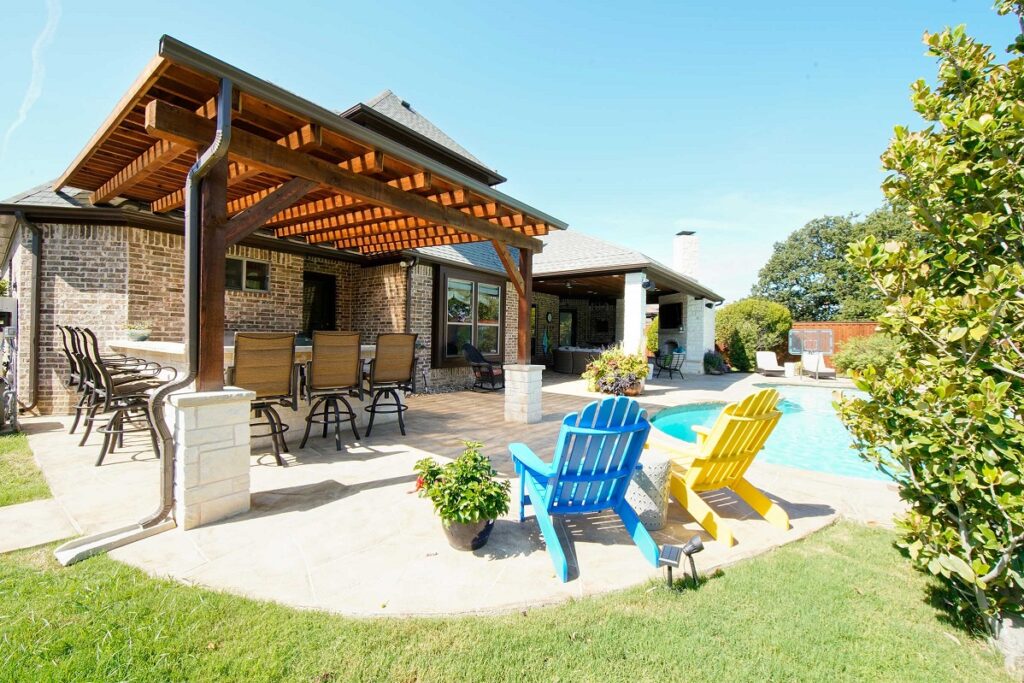It seems like every year, you see a new thing you want to update, restore, or overhaul on or around your house. There are so many jobs you can pick that it’s hard to narrow it down. It’s best to understand which parts of your house you may be overlooking that are desperately in need of change. This area of your home that may be overlooked, but sorely in need of an update, is your backyard patio.
Your backyard is a source of pride and serves a lot of important functions. It could be where you go to relax, a safe space for your kids to play, and an area for your pets to get fresh air, and it’s crucial for the overall quality of your home. Overlooking the patio can lead to damages that mean you need to replace it or commit to a full renovation. If you’re planning a new patio installation, here’s what you need to know to make it a successful one.
1. What Material Do You Want to Use?
The building or fixing of your existing patio requires some hard decisions. One such decision is determining what kind of material to use. There are plenty of patio stones and patio materials you can build it with. The most common are brick, concrete, wood, and stone. These are all very good materials you can use to create a new patio with or have one installed. Similarly, you can update an existing patio by replacing old stones with new ones. Concrete is a little tougher because it’s such a dense material and needs to be dug up, as it’s usually in one solid chunk. Wood is great for a cabin-style look, stones are easy to install and are fairly cost-efficient, and brick is also sturdy as an overall material. Pick one that will work well with your budget, size, needs, and quality needs.
2. How Can You Protect The Patio?
During the installation or remodeling process, you might be thinking about how to keep the patio protected from the elements. The first thing you can do is to pick the right material for the climate you live in. You should consider how much moisture could get in if you live in a humid zone, or if you get a lot of snow in the winter, heavy rainfall seasons, and even if you live in a dry, hot climate. Besides picking a durable patio material, the simplest solution is to protect it with some form of cover. Overhead covers work best, but the experts at https://www.royalcovers.com/outdoor-roll-down-shades-patio-shades/ show that retractable outer shades can keep everything on the patio protected as well. Maintaining your patio condition is vital to finding solutions in this vein that will keep you from having to fix it for years to come.
3. What Design Are You Interested in?
The materials aren’t the same as the design. The materials are simply the type of product you’ll be using to mold your patio into a design style that will work well for your home. As mentioned, wood, concrete, brick, and stone are the most common materials for a patio. Beyond that, you can start thinking about interlock stones, horizontal or staggered wood layout, and even gravel and stone combination. These design styles depend on factors like how much of the patio surface will be visible, how much work you want to put in, how much money you’re willing to spend, and personal preference. There’s not much that makes anyone design better than the other, but it’s essential to like the design you chose, so this is a question to ask yourself before beginning the project.
4. How Big Do You Want Your Patio?
In opposition to the design style, you need to consider how big of an area you can afford to this patio. Measure your existing patio and any potential space you can use, or space that will need to be sacrificed for your new patio, before choosing materials. Your square footage matters, and it will impact the cost of your materials, as well as other ones like soil, if the foundation of the patio needs some fresh surface. You can expand upwards by tiering the patio and turning it into a mini-deck (i.e., wood material, brick, stone), or expand it deeper into your yard for more surface area. Another reason to consider how big you want this new or improved patio is that it lets you figure out how much or how little you’ll be able to comfortably fit on it. Barbecues, couches, chairs, tables, and anything that takes up square footage will help determine the true area your patio gives you.
5. How Much is Your Budget?
We then come to the last question invariably on anyone’s mind when it comes to a home project – how much will it cost? It depends on the materials you use, how much you want to do yourself, what additions you add, and your budget. Making a budget before you dive into this landscaping endeavor will help you plan for unseen expenditures like labor and materials, or help you save some that can go toward extras when all is said and done. Who you choose to help install this patio will either cost you little, but result in lesser quality, or cost most, and likely get a better result. Overall, a good patio installation can be done for under $5000 without losing out on quality. Budgeting is still valuable, so you know exactly where each of your dollars is going.
Staring at a dilapidated, unsightly, or boring patio can leave you feeling like you’re missing out, and that’s no good. As a homeowner, you want every part of your home to be part of your big vision for the best possible living space, and installing a new patio should be part of that vision. Using these tips before starting your next renovation project will help you get the most out of your patio.
